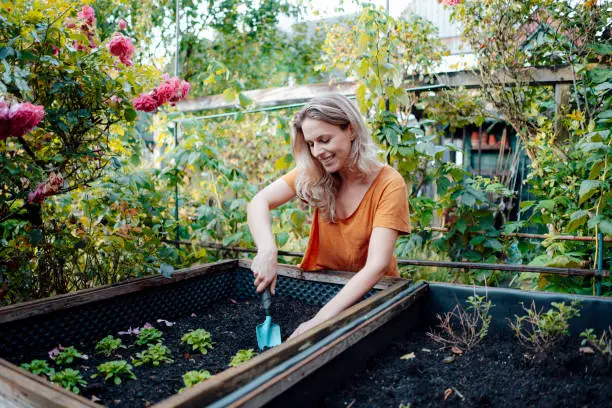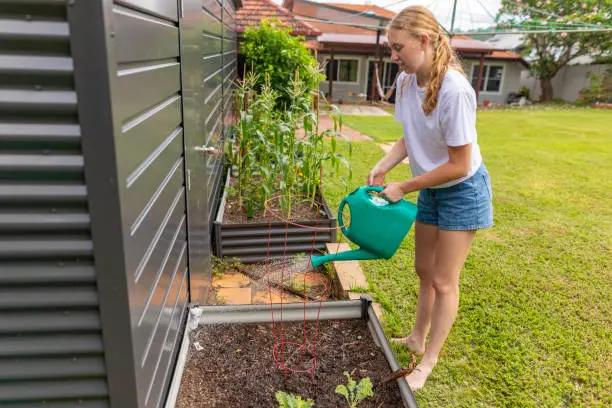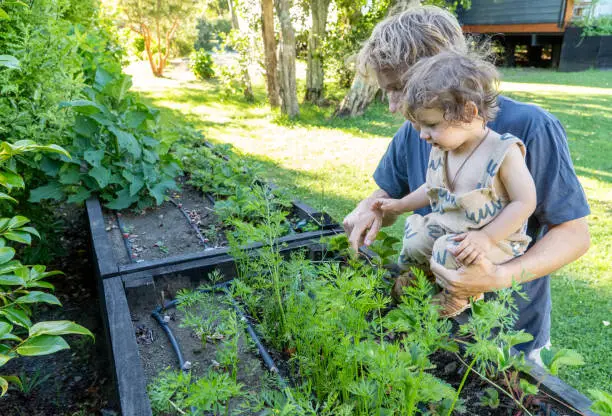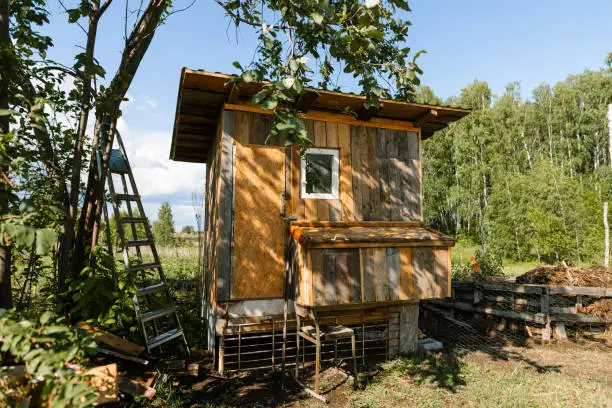Imagine eating a fresh apple in winter or a rich stew with homegrown potatoes and carrots. Because of root cellaring, your backyard homesteading harvest stays fresh and tasty long after the growing season finishes.
First, define a root cellar. Imagine a calm, quiet underground pantry where vegetables can sleep until dinnertime. It’s more than a hole—it’s your food preservation weapon.
Why bother with a root cellar? Modern refrigeration is impressive but limited. Your fridge might soon become worthless during a power outage. Who wants to pay hefty electric expenses to chill potatoes? Root cellars are eco-friendly and low-tech.
Let’s construct one. Though not Bob Vila-like, this requires some fundamental know-how and elbow grease.
Choose the correct position. A north-facing slope is best since it coolers longer. No slope? No problem! Remember to use well-drained soil—no one wants their crops to drown in mud.
Digging follows. Most climates benefit from 10 feet of depth. This depth keeps the sweet region between 32°F and 40°F. Too hot or cold rots or freezes things.
Ventilation matters, too. Install two vents—one high to release warm air and one low to draw cool air—to avoid moldy vegetables. Imagine your cellar breathing.
Gravel drains well, while wooden slats provide rustic beauty without breaking the budget.
Once your structure is set, shelving is essential. Solid hardwood shelves are attractive and functional.

Construction complete! Stock up on this bad boy.
Like kids at a buffet, vegetables have varied needs. Potatoes prefer darkness but dislike humidity; apples like lower temps but need airflow to avoid sentimentality.
Be careful to mix apples with other produce only if you want applesauce! They produce ethylene gas, which accelerates ripening.
Straw or sawdust between produce layers regulates moisture and insulates against temperature changes.
Dampness prevents drying but also promotes mold growth. Most roots, such as carrots and beets, need 85-95% humidity, although onions and garlic need less.
Temperature changes are another enemy—installing an old-school thermometer allows you to monitor without exhausting batteries or wallets!
Have you ever heard of “curing”? To toughen their skins against rot during storage, onions hanging in bunches or potatoes spread on newspaper under shade are dried out before storage!
Concerning pests, mice adore root cellars almost as much as humans! Simple traps or chicken wire mesh along walls and floors prevent unwanted guests from entering your veggie party!
Routine weekly checks catch rogue rots/molds before they spread across the cache, saving you from disappointment when you expect beautiful parsnips but find rotten mounds!
Herbs like rosemary and lavender in the cellar discourage pests and give a pleasant fragrance each visit, reminding you why it’s worth building and keeping your slice of farm heaven underground!
How to Dry and Dehydrate Fruits and Vegetables in Backyard Homesteading
Picture this: You’re sipping a cold drink on your patio as the sun warms your face. The dried fruits and vegetables in front of you are colorful and tempting. This is backyard homesteading, not a dream.
Let’s start with why you’d dry or dehydrate produce. Fruits and vegetables are excellent, but they expire. Drying increases their shelf life and flavor. Consider those tasty apple snacks or zesty dried tomatoes that make your taste senses dance.
So how do you begin? Many approaches exist, each with its pros and cons.
Drying in the sun
The oldest method is sun drying. As simple as it sounds: sun-drying fruit and vegetable slices. But wait! This approach demands hot, low-humidity days. Mold should not harm your work.
An old-timer taught me how to sun-dry tomatoes. He thinly sliced them, sprinkled salt to drain out moisture, and placed them on a brick-supported screen for airflow. Cheesecloth kept bugs away. Simple but effective!

Oven-drying
In cloudy or humid climates, the oven is your friend. Set the lowest temperature—usually 140°F (60°C)—and place slices on parchment-lined baking pans.
Leave the oven door slightly ajar to release moisture. My first batch became mush instead of crispy treats, so I learned the hard way.
If you plan to dry often, a dehydrator may be worth it. These devices have many trays and adjustable temperatures to evenly dry food.
I still remember my first dehydrator, a small countertop device that buzzed all night and turned apples into chewy rings.
Tips for Preparation
Whatever strategy you use, preparation is critical:
1. Thoroughly wash: Cleanliness is crucial.
2. Uniform Slices: Even thickness facilitates reliable drying.
3. Blanketing: Blanching carrots and green beans preserves color and texture.
4. Season lightly. Salt and spices enhance flavors without dominating them.
Let’s look at some ideal drying fruits and vegetables:
After losing water, apples stay sweet, making them great. Core them (an apple corer works well) and slice uniformly—about 1/8 inch thick.
Are you feeling adventurous? Sprinkle cinnamon! Put the apples in pans in the oven or dehydrator, and voilà —delicious apple chips for any time eating!
Drying tomatoes enhances their umami flavor, making them flavor bombs for salads or pasta! Before drying, cut cherry tomatoes in half or quarters and place them cut-side up!
Pro tip: Store these beauties firmly in olive oil with rosemary and thyme for longer storage and better flavor!
Herbs, albeit not fruits or veggies, are easy to dry! Bundle small bunches together, hang upside-down somewhere dark, and dry until crispy enough to crumble between fingers. Store jars away from direct sunlight to preserve potency over time in case unexpected usage needs arise.
Sun-dried tomatoes are delicious, but bugs must be avoided. Cover with cheesecloth for airflow. For faster results, use an oven. Prop the door open, set it to the lowest temperature, and lay thinly sliced produce on baking sheets. It takes patience, but it pays off.
A dehydrator changes everything. It is ideal for large volumes and produces consistent results. Slice your produce evenly, place it on the trays, and let the machine do the work. My first dehydrator turned apples into chewy, sugary rings overnight—pure delight.
Preparation matters. Wash and slice everything evenly, blanch tougher veggies to preserve color, and season lightly to enhance flavor without overpowering natural taste. Cored and thinly sliced apples make great snacks. Cut and dried tomatoes add flavor to meals. Hang little bunches of herbs upside down in a cool, dark location to dry.





Leave a Reply
You must be logged in to post a comment.